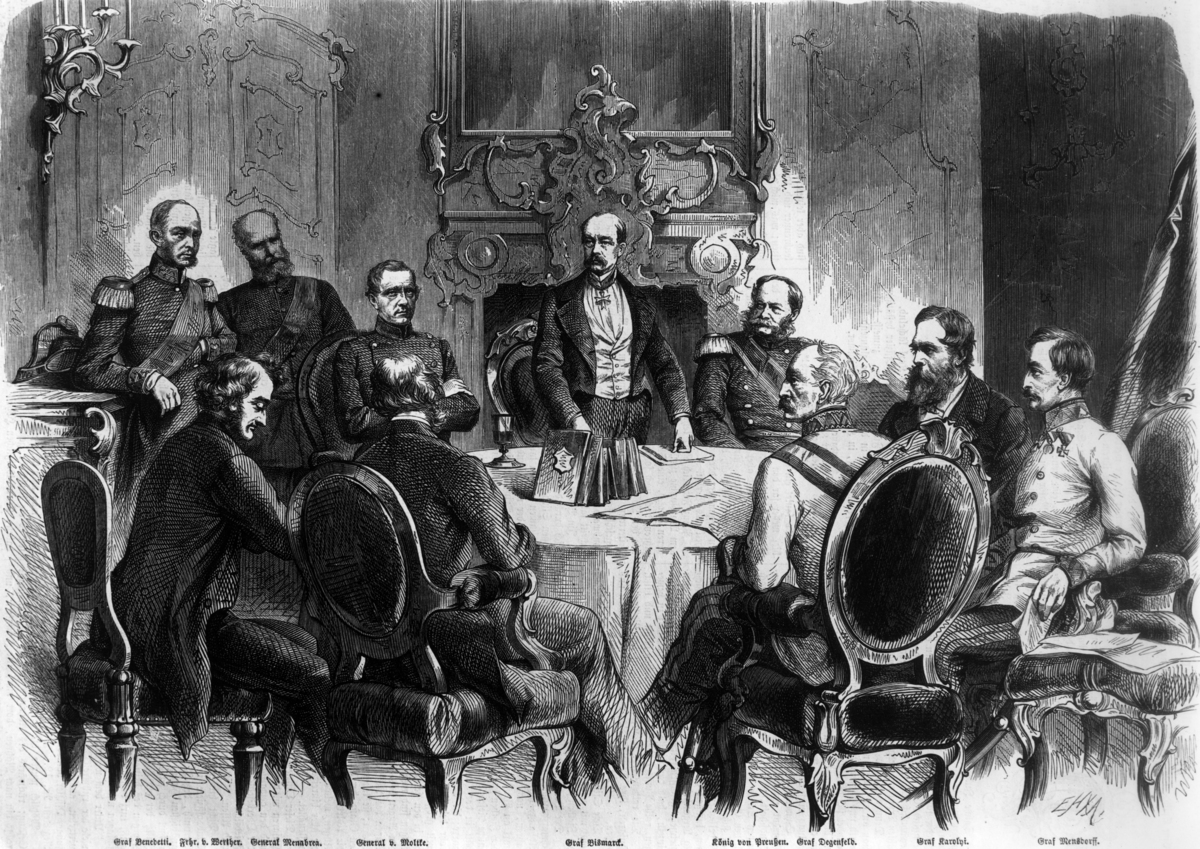Abstract
At the armistice negotiations at Nikolsburg—three weeks after the
momentous Prussian victory at the Battle of Königgrätz (July 3,
1866)—Prussia’s King Wilhelm I reluctantly agreed that the
Austro-Prussian War (German Civil War) of 1866 should be concluded as
quickly as possible, before possible intervention from Britain and
Russia. France had already made it known that it expected any agreement
to preserve the territorial integrity and political independence of the
Kingdom of Saxony—a state that had lost over one-half of its territory
to the victorious Prussians in the Congress of Vienna in 1815 and joined
Austria among the defeated at Königgrätz. Wilhelm’s tortured decision to
accede to the French demand was one of the most important aspects of the
Nikolsburg accord. Wilhelm found this outcome particularly difficult to
accept because he regarded Saxony’s territorial integration into Prussia
as a legitimate war trophy. Bismarck, however, understood that Saxony
would play a vital role as Prussia’s junior partner in the North German
Confederation. Moreover, Saxony’s valiant military efforts under the
generalship of then Crown Prince Albert impressed the Prussians. Both
King Johann of Saxony (1801–1873) and his successor King Albert
(1828–1902) proved loyal Prussian allies in the North German
Confederation and, later, the German Empire. Pictured from left to right
are: Count Vincent Benedetti (French ambassador to Prussia); Baron Karl
von Werther (Prussian ambassador to France); General Luigi Frederico
Menabrea (representing Italy, which was allied with Prussia); Helmuth
von Moltke (Chief of the Prussian General Staff); unknown; Bismarck;
King Wilhelm I; Count August von Degenfeld-Schonburg (former Austrian
minister of war and active general); Count Alois Károlyi (Austrian
ambassador to Prussia); and Count Alexander von Mensdorff-Pouilly
(Austrian foreign minister). Woodcut (c. 1870) after a drawing by
Eichler.
